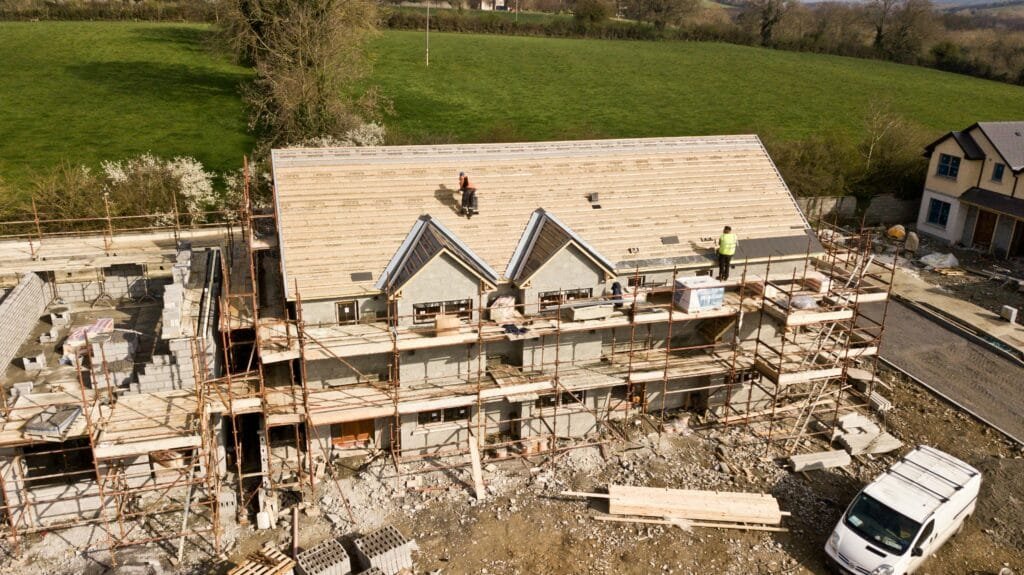When designing or renovating a home, one of the most important architectural decisions is the roof. The type of roof you choose not only affects your home’s overall appearance but also its durability, maintenance requirements, and long-term costs. Among the many options available, the debate between flat and pitched roofs is one of the most common, and for good reason. Each has its own set of advantages and disadvantages, making it suitable for different types of buildings and climates. Whether you are a homeowner or a business looking into roofing lismore solutions, understanding these differences can help you make a more informed decision.

Understanding Flat Roofs
A flat roof, as the name suggests, has a nearly level surface with only a slight slope for water drainage. These roofs are commonly used in modern and commercial architecture, offering a sleek and minimalist aesthetic. However, their practicality extends beyond looks.
Advantages of Flat Roofs
- Cost-Effective Installation – Flat roofs typically require fewer materials and less labor, making them a more affordable option upfront. Their simpler design also allows for faster installation, reducing overall project duration.
- Usable Space – One of the most significant benefits of a flat roof is the extra usable space it provides. Many property owners use this area for rooftop gardens, solar panels, or outdoor lounges. This makes flat roofs ideal for maximizing limited space in urban settings.
- Ease of Maintenance – Accessing a flat roof for cleaning, inspections, or repairs is significantly easier than climbing a steep-pitched roof. This accessibility can help extend the roof’s lifespan through regular maintenance.
Disadvantages of Flat Roofs
- Drainage Challenges – Flat roofs are more prone to water pooling since they lack steep slopes. Without proper drainage systems, standing water can lead to leaks, mold, and structural damage over time.
- Shorter Lifespan – Depending on the materials used, flat roofs generally have a shorter lifespan compared to pitched roofs. They may require more frequent inspections and maintenance to remain in good condition.
- Limited Insulation Options – Flat roofs can sometimes struggle with insulation and temperature regulation, particularly in regions with extreme weather. Additional layers or specialized materials are often necessary to ensure energy efficiency.
Exploring Pitched Roofs
A pitched roof is designed with one or more slopes that rise at an angle. This traditional style has been favored for centuries for its adequate water runoff and classic appearance.
Advantages of Pitched Roofs
- Superior Drainage – The sloped design allows rainwater, snow, and debris to slide off easily, minimizing the risk of leaks or water accumulation. This makes pitched roofs particularly effective in areas that experience heavy precipitation.
- Extended Durability – Pitched roofs often have a longer lifespan due to their natural resistance to water damage and their ability to evenly distribute weight. With proper materials, they can last several decades with minimal issues.
- Aesthetic Appeal – The visual charm of pitched roofs contributes to a home’s character and curb appeal. They can be customized in various styles—gable, hip, or mansard—to complement different architectural designs.
- Better Insulation and Ventilation – Pitched roofs provide more room for insulation and attic space, helping regulate indoor temperatures more effectively year-round.
Disadvantages of Pitched Roofs
- Higher Initial Cost – Building a pitched roof typically requires more materials, labor, and time than a flat roof. The added complexity can increase both cost and construction time.
- Difficult Access – Maintenance, repair, and cleaning are more challenging due to the steep incline, often requiring professional roofers equipped with specialized safety gear.
- Design Limitations – In modern minimalist architecture or buildings with space constraints, a pitched roof may not always be the most practical or aesthetically fitting choice.
Choosing Between Flat and Pitched Roofs
Deciding between a flat and pitched roof depends on your budget, aesthetic goals, and functional needs. Flat roofs offer versatility and modern appeal, while pitched roofs deliver timeless style and long-lasting protection. Climate, building type, and intended use of the roof space should all be factored into your decision.
If you are considering roofing Lismore solutions for a residential or commercial project, consulting with experienced roofing professionals can make all the difference. They can help you evaluate your site conditions, material options, and design preferences to ensure that your choice aligns with both your vision and practical requirements.
Final Thoughts
Both flat and pitched roofs offer unique benefits and challenges. A flat roof provides a cost-effective, space-saving design ideal for modern structures, while a pitched roof offers durability, charm, and superior weather resistance. Ultimately, the right roof for your property should balance aesthetics, function, and longevity, ensuring that it not only protects your space but also enhances its overall value and beauty for years to come.
